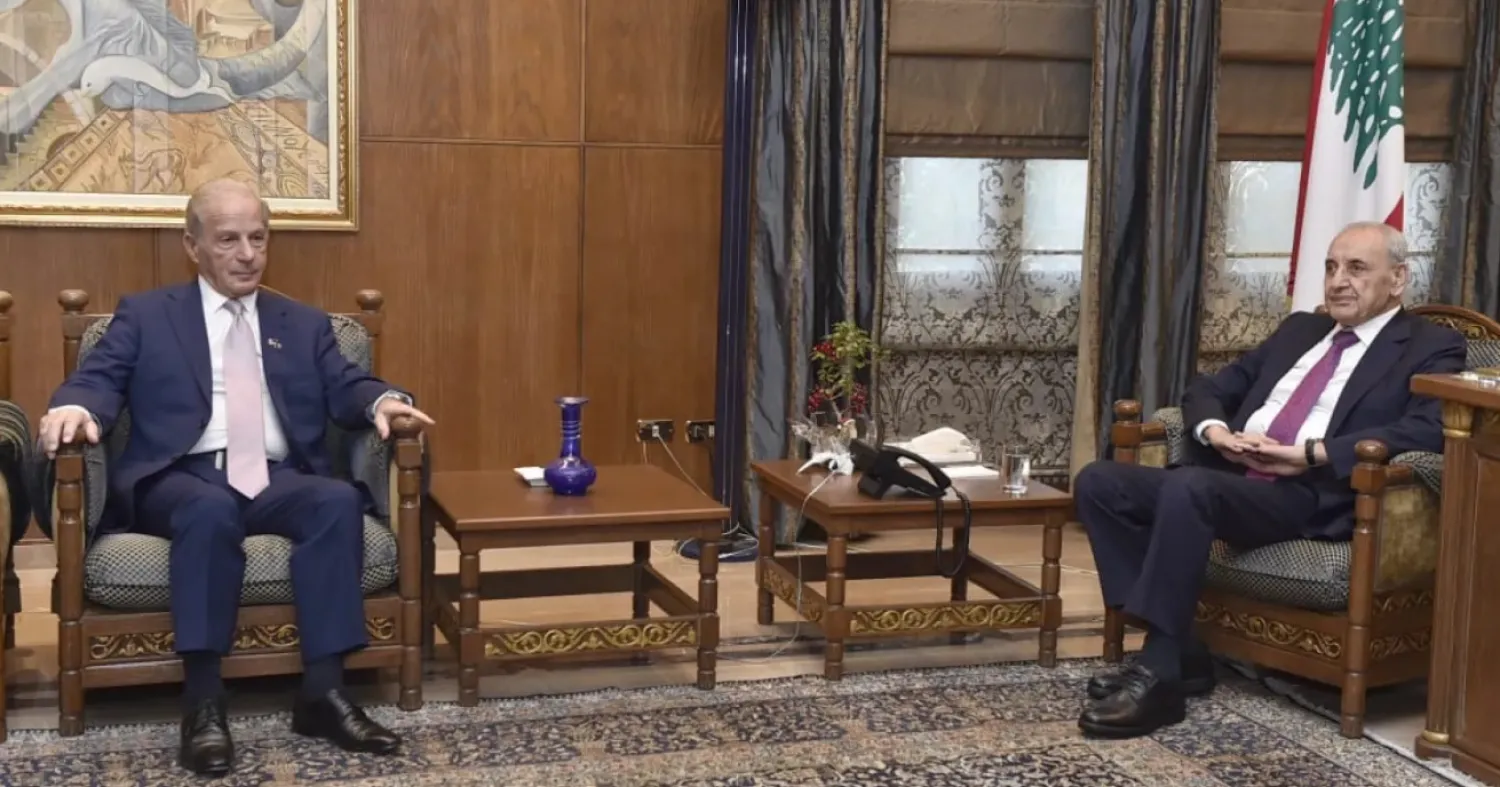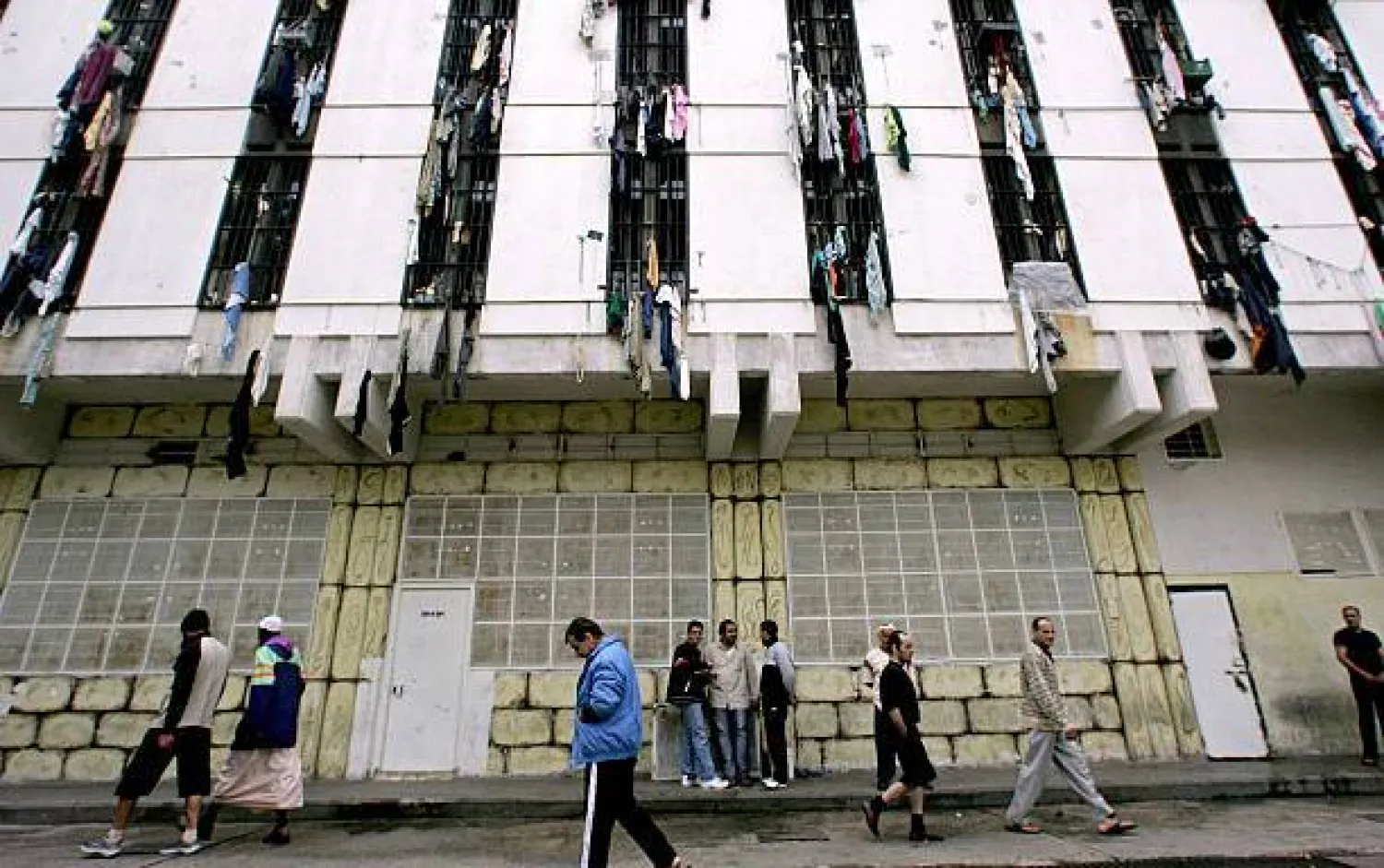Lebanon’s Parliament Speaker Nabih Berri dismissed what he called efforts to intimidate the Lebanese and underscored the "fundamental constants” that he says anchor negotiations with Israel via the Mechanism Committee.
He insisted that the May parliamentary elections will go ahead as scheduled and described his personal relationship with Saudi Arabia as “very good”, adding that ties between Lebanon and the kingdom were “good”.
Berri made the remarks during a meeting with senior Lebanese journalists from the Press Syndicate headed by Aouni Al-Kaaki.
His comments coincided with his second meeting in 24 hours with the United States ambassador to Beirut, Michel Issa.
According to a statement from the Speaker’s office, the talks reviewed “developments in the general situation and the latest events, as well as bilateral relations”.
Barrack’s “mistake”
Responding to a question from the syndicate on “threats voiced by some diplomats, especially repeated remarks by United States envoy Tom Barrack about joining Lebanon to Syria”, Berri said: “No one threatens the Lebanese."
"It is inconceivable to address the Lebanese in such language, especially from diplomats, let alone from someone like Ambassador Tom Barrack. What he said about annexing Lebanon to Syria is a big mistake that is completely unacceptable,” he added.
Berri said the Lebanese have “no alternative and no escape” from facing risks, repercussions and threats from any side except through unity, adding, “With unity we can liberate the land.”
Turning to the ceasefire agreement and negotiations, Berri asked, “Is the Mechanism Committee not a negotiating framework?”
“There are constants we negotiate through this committee, namely Israeli withdrawal, deployment of the Lebanese Army, and limiting weapons in the area south of the Litani to the hands of the Lebanese Army,” he explained, adding that the committee operates under American, French and United Nations sponsorship.
He added, “I have said more than once that there is no objection to bringing in any civilian or technical figure if needed, provided the agreement is implemented.”
Berri said Lebanon has fulfilled all required steps since November 2024. He said the Lebanese Army has deployed more than 9,300 officers and soldiers with the support of UNIFIL, which confirmed in its latest reports Lebanon’s compliance with all its obligations.
He added that Israel has violated the agreement with about 11,000 breaches.
Berri said the Lebanese Army has implemented 90 percent of the ceasefire provisions south of the Litani and will fully complete the remaining steps by the end of the year.
He said this was confirmed by UNIFIL, the Mechanism Committee and Army Commander General Rodolf Haykal.
“It is unfortunate that no one is asking whether Israel has complied with even a single clause of the ceasefire agreement. Instead, it has expanded its occupation of Lebanese territory,” he said.
No cancellation of parliamentary elections
On calls by some parliamentary blocs to amend the electoral law regarding expatriate voting, Berri said the existing law is in force and the elections will be held according to it.
“There will be no cancellation and no postponement. Everyone wants elections,” he said.
He added that he remains open to any formula leading to consensus on outstanding issues that divide political forces, especially the question of expatriates.
“No one wants to exclude expatriates. Even so, I have said and will repeat that we should implement the Taif Agreement in its provisions related to the electoral law and the establishment of a Senate. But are they willing?” he asked.
Berri reiterated that Lebanese bank deposits are “sacred rights” and warned that these rights must not be compromised, surrendered or accepted as lost.









